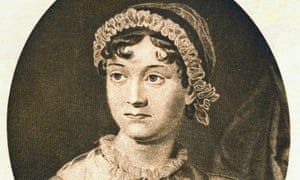
It is a truth which should be universally acknowledged: Jane Austen is awesome. As well as penning some of the best-known and best-loved works of literature, she is also responsible for the creation of two epic movies: Clueless, based on the novel Emma, and Bridget Jones’s Diary, taken from Pride and Prejudice (hence all the Darcy business).
Sadly, however, Austen didn’t live to see the legendary status (and rom coms) her writing would eventually afford her; her promotion to the literary canon came long after her death. But she’s a true stalwart of the English literature curriculum now. So, in honour of her birthday (16 December) let’s look at how you can bring Austen to life in your classroom.
Start simply with this guide from the Jane Austen’s House Museum, ideal for younger key stage 4 students. It looks at the expectations of the era for young men (produce male heirs to inherit assets) and women (maintain an untarnished reputation), along with the ways they spent their free time (lots of dances). This family tree also offers a useful introduction to Austen, and this article from the British Council explains Austen’s context.
For a more interactive exploration, this online exhibition from the British Library looks at the Regency world through historical artefacts including contemporary cartoons, early drafts of Austen’s work and her personal letters. The Morgan Library & Museum in New York also has a treasure trove of Austen-related items, all available online to be zoomed in on and pored over at your (and your students’) pleasure. An accompanying podcast and short documentary film also explore her enduring appeal.
Once you’ve covered the context, it’s time to dive into an analysis of Austen’s literary techniques. This Teaching English resource familiarises students with the language of the 19th century and its grammar, using a short extract from the opening of Emma to explore the differences from contemporary English. Simple worksheet use quotes from Northanger Abbey to explore the difference between direct speech, indirect speech and free indirect speech.
This lesson from the British Council takes Emma as its source for a historical exploration of the importance of letter-writing in Austen’s era. Students are asked to consider their own written communication and compare it with the epistolary exchanges of Austen’s characters by looking at a scene from the novel.
For key stage 5 students, the British Library looks at Austen’s contribution to the form of the modern novel with this lesson and associated resources exploring her radical social realism in Emma. It uses a contemporary review and a comparison with another work from the time, The Mysteries of Udolpho by Ann Radcliffe. An accompanying short film looks at how her style marked her out as unique among the writers of the day.
But Austen’s best-known work is undoubtedly Pride and Prejudice, beloved for its wit, wisdom and – in some quarters, at least – the moment in the lake in that BBC adaptation. Ahem.
For key stage 4 students, this matching activity encourages exploration of Austen’s literary techniques in Pride and Prejudice, including repetition, exaggeration and listing. This quote-based activity, meanwhile, asks students to read between the lines of Austen’s descriptions of the Bennet family and their friends to detect the nuances of her writing. For example, this beautifully restrained burn of the younger sisters: “[Kitty and Lydia’s] eyes were immediately wandering up in the street in quest of the officers, and nothing less than a very smart bonnet indeed or a really new muslin in a shop window, could recall them.”
Teaching English offers a series of lessons on the text for key stage 3 and lower key stage 4 students. This one, on the heroes and villians of Pride and Prejudice, aims to secure students’ use of adjectives and other descriptive language through a comparison of Mr Darcy with the drippy Mr Bingley. This lesson brings a geographical element to the study of the novel by asking students to identify the real and fictional locations referred to in the text, while also developing their descriptive skills. And this lesson brings an element of drama by asking students to explore the relationship between text and performance by analysing the way Austen uses dialogue for characterisation.
For more advanced discussions of the themes and ideas, this series of extracts and discussion questions investigates the social history presented by the novel, looking at the class structure of life in the 19th century and the way women were treated within it. And this BBC World Book Club explores questions from around the world relating to the text, in a discussion with novelists (and Austen fans) Moni Mohsin and PD James (who wrote a whodunnit sequel to Pride and Prejudice entitled Death Comes to Pemberley).

No comments:
Post a Comment